Related Research Articles

Small Computer System Interface is a set of standards for physically connecting and transferring data between computers and peripheral devices, best known for its use with storage devices such as hard disk drives. SCSI was introduced in the 1980s and has seen widespread use on servers and high-end workstations, with new SCSI standards being published as recently as SAS-4 in 2017.
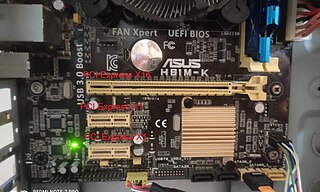
PCI Express, officially abbreviated as PCIe or PCI-e, is a high-speed serial computer expansion bus standard, designed to replace the older PCI, PCI-X and AGP bus standards. It is the common motherboard interface for personal computers' graphics cards, sound cards, hard disk drive host adapters, SSDs, Wi-Fi and Ethernet hardware connections. PCIe has numerous improvements over the older standards, including higher maximum system bus throughput, lower I/O pin count and smaller physical footprint, better performance scaling for bus devices, a more detailed error detection and reporting mechanism, and native hot-swap functionality. More recent revisions of the PCIe standard provide hardware support for I/O virtualization.

SATA is a computer bus interface that connects host bus adapters to mass storage devices such as hard disk drives, optical drives, and solid-state drives. Serial ATA succeeded the earlier Parallel ATA (PATA) standard to become the predominant interface for storage devices.
A disk array controller is a device that manages the physical disk drives and presents them to the computer as logical units. It almost always implements hardware RAID, thus it is sometimes referred to as RAID controller. It also often provides additional disk cache.
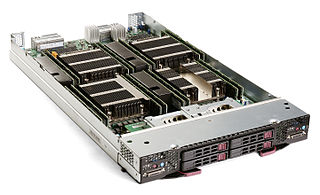
A blade server is a stripped-down server computer with a modular design optimized to minimize the use of physical space and energy. Blade servers have many components removed to save space, minimize power consumption and other considerations, while still having all the functional components to be considered a computer. Unlike a rack-mount server, a blade server fits inside a blade enclosure, which can hold multiple blade servers, providing services such as power, cooling, networking, various interconnects and management. Together, blades and the blade enclosure form a blade system, which may itself be rack-mounted. Different blade providers have differing principles regarding what to include in the blade itself, and in the blade system as a whole.
HPE Integrity Servers is a series of server computers produced by Hewlett Packard Enterprise since 2003, based on the Itanium processor. The Integrity brand name was inherited by HP from Tandem Computers via Compaq.
Brocade was an American technology company specializing in storage networking products, now a subsidiary of Broadcom Inc. The company is known for its Fibre Channel storage networking products and technology. Prior to the acquisition, the company expanded into adjacent markets including a wide range of IP/Ethernet hardware and software products. Offerings included routers and network switches for data center, campus and carrier environments, IP storage network fabrics; Network Functions Virtualization (NFV) and software-defined networking (SDN) markets such as a commercial edition of the OpenDaylight Project controller; and network management software that spans physical and virtual devices.
The Dell Remote Access Controller (DRAC) is an out-of-band management platform on certain Dell servers. The platform may be provided on a separate expansion card, or integrated into the main board; when integrated, the platform is referred to as iDRAC.
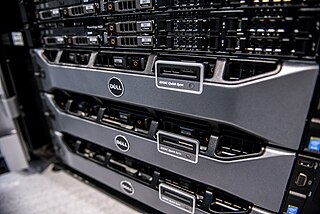
The PowerEdge (PE) line is Dell's server computer product line. PowerEdge machines come configured as tower, rack-mounted, or blade servers. Dell uses a consistent chip-set across servers in the same generation regardless of packaging, allowing for a common set of drivers and system-images.

The IBM BladeCenter was IBM's blade server architecture, until it was replaced by Flex System in 2012. The x86 division was later sold to Lenovo in 2014.
The IBM Remote Supervisor Adapter is a full-length ISA or PCI adapter produced by the IBM corporation.
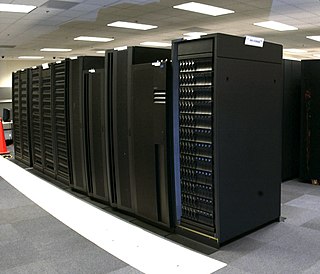
The IBM Storage product portfolio includes disk, flash, tape, NAS storage products, storage software and services. IBM's approach is to focus on data management.

ATTO Technology, Inc. is a manufacturer of storage connectivity products for data-intensive computing. ATTO manufactures Fibre Channel and SAS/SATA host bus adapters, RAID adapters, Fibre Channel switches, protocol conversion bridges, storage controllers, MacOS iSCSI initiator software and acceleration software with storage interface connectivity to SATA, SAS, Fibre Channel, Thunderbolt devices, Ethernet and NVMe.
EqualLogic, Inc. was an American computer data storage company based in Nashua, New Hampshire, active from 2001 to 2007. In 2008, the company was merged into Dell Inc. Dell-branded EqualLogic products are iSCSI-based storage area network (SAN) systems. Dell has 3 different lines of SAN products: EqualLogic, Compellent and Dell PowerVault.
IBM Storwize systems were virtualizing RAID computer data storage systems with raw storage capacities up to 32 PB. Storwize is based on the same software as IBM SAN Volume Controller (SVC).
The Intel Modular Server System is a blade system manufactured by Intel using their own motherboards and processors. The Intel Modular Server System consists of an Intel Modular Server Chassis, up to six diskless Compute Blades, an integrated storage area network (SAN), and three to five Service Modules. The system was formally announced in January 2008. The server is aimed at small to medium businesses with "50 to 300 employees".
Adaptable Modular Storage 2000 is the brand name of Hitachi Data Systems mid-range storage platforms.

The Dell blade server products are built around their M1000e enclosure that can hold their server blades, an embedded EqualLogic iSCSI storage area network and I/O modules including Ethernet, Fibre Channel and InfiniBand switches.
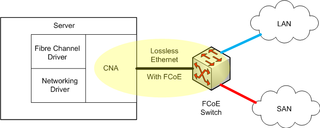
A converged network adapter (CNA), also called a converged network interface controller (C-NIC), is a computer input/output device that combines the functionality of a host bus adapter (HBA) with a network interface controller (NIC). In other words, it "converges" access to, respectively, a storage area network and a general-purpose computer network.
Dell PowerEdge VRTX is a computer hardware product line from Dell. It is a mini-blade chassis with built-in storage system. The VRTX comes in two models: a 19" rack version that is 5 rack units high or as a stand-alone tower system.
References
- ↑ Correia, Edward (8 September 2014). "Review: Dell PowerEdge R730 Is Furious Fast". CRN Magazine . Retrieved 29 January 2016.
- 1 2 3 Stevens, Alan (8 June 2015). "Dell PowerEdge R730 review". TechRadar . Future plc . Retrieved 29 January 2016.
- ↑ "PERC PowerEdge RAID Controller types for Dell Servers". Dell . Retrieved 29 January 2016.
- ↑ "Review: Dell PowerEdge 2950". Computing . Incisive Media . Retrieved 29 January 2016.
- 1 2 Morejon, Mario. "Dell PowerEdge T110". PC Magazine . Retrieved 29 January 2016.
- ↑ "Dell PERC 6/i Integrated SAS RAID Controller Card - storage controller (RAID) - SAS - PCIe x8 Series". CNET . CBS Interactive . Retrieved 29 January 2016.
- 1 2 3 4 OBrien, Kevin (5 February 2013). "Dell PowerEdge R720 12G Review". Storage Review. Retrieved 29 January 2016.
- ↑ Ferrill, Paul (9 September 2014). "Review: Dell's 13G PowerEdge R730xd, a workhorse server with a kick". InfoWorld . Retrieved 29 January 2016.